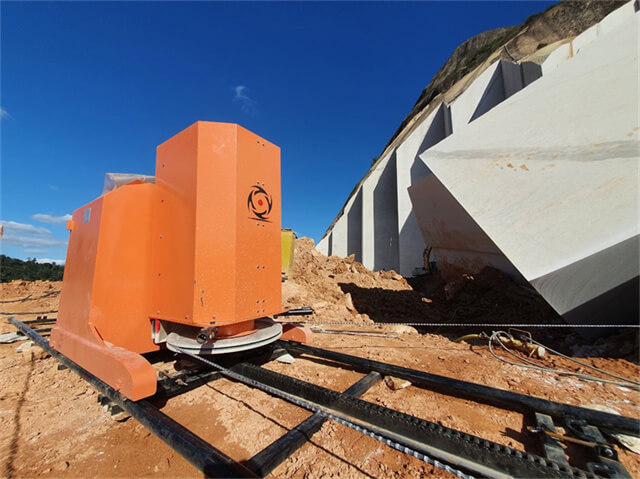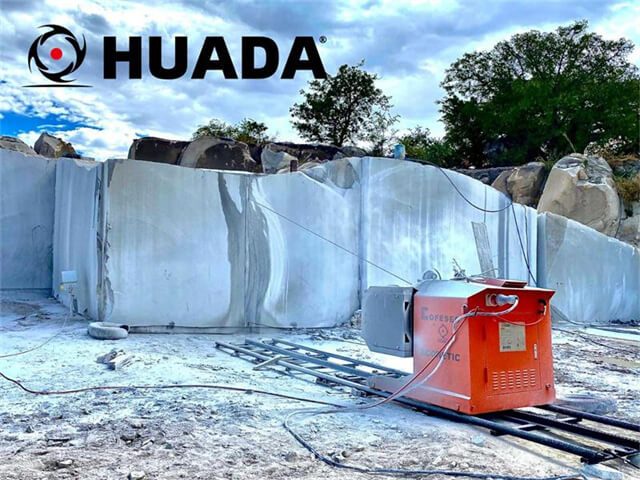Author:Huada Quarrying Machine FROM:Stone quarry machine manufacturer TIME:2024-11-05
In the stone cutting industry, efficiency and precision are paramount. Among the tools available, wire saws have gained immense popularity for their effectiveness in cutting various types of stone. This article explores the differences between traditional wire saw stone cutting machines and modern diamond wire saws, highlighting their features, advantages, and applications. By understanding these distinctions, professionals can make informed decisions about which equipment best suits their needs.

Wire saw stone cutting machines have become essential in quarries and stone processing facilities. These machines typically use a steel wire with attached diamond segments to cut through hard materials such as granite, marble, and concrete. The operation involves running a wire through the stone, allowing for clean and precise cuts. This method minimizes waste and maximizes efficiency, making it a preferred choice for many stone fabricators.
Diamond wire saws, a more advanced variant of wire saw technology, utilize a thin wire embedded with diamonds along its length. This design not only enhances cutting ability but also prolongs the lifespan of the wire. The diamond segments provide superior hardness, allowing for faster cutting speeds and cleaner finishes compared to traditional wire saws. As a result, diamond wire saws have gained traction in both quarrying and stone fabrication industries.
When it comes to cutting performance, diamond wire saws generally outperform standard wire saw machines. The presence of diamonds allows for smoother cuts and greater precision, particularly in harder stone types. Traditional wire saws may struggle with extremely hard materials, resulting in slower cutting speeds and a rougher finish. Conversely, diamond wire saws maintain high efficiency even in challenging conditions, making them a superior choice for intricate projects that demand meticulous detail.

Cost is a critical factor in the decision-making process for stone cutting operations. Traditional wire saw machines tend to have lower initial costs compared to diamond wire saws. However, the operational costs can be higher for conventional machines due to increased wear and tear on the wire. In contrast, while diamond wire saws require a larger upfront investment, their durability and efficiency often lead to lower long-term costs. It's essential for businesses to evaluate their budget alongside the expected return on investment.

Maintenance requirements differ significantly between the two types of saws. Traditional wire saws may require frequent wire replacements due to wear, which can lead to increased downtime. Diamond wire saws, while initially more expensive, often have longer operational lifespans and require less frequent maintenance. This advantage translates to more productive work hours and reduced operational interruptions, making diamond wire saws a more reliable option in the long run.
Both machines offer versatility in terms of the types of cuts they can perform. However, diamond wire saws provide greater flexibility due to their ability to handle various stone types and thicknesses with ease. They can execute complex cuts, including curves and angles, which are often challenging for traditional wire saws. This adaptability makes diamond wire saws ideal for projects requiring intricate designs and custom shapes, further elevating their appeal in the market.
Environmental considerations are becoming increasingly important in the manufacturing and construction industries. Traditional wire saws tend to produce more waste due to their cutting techniques, which can generate significant stone debris. In contrast, diamond wire saws produce less waste, as their cutting method is more efficient and precise. This reduction in waste not only leads to cost savings but also aligns with sustainable practices that many companies strive to adopt.
The user experience can vary between wire saw stone cutting machines and diamond wire saws. Traditional wire saws may require more training for operators to achieve optimal results, as improper handling can lead to inefficiencies and material loss. Diamond wire saws, on the other hand, often come equipped with advanced technology that simplifies operation and reduces the learning curve for new users. This ease of use can enhance productivity and minimize the risks associated with cutting operations.
Real-world applications highlight the strengths of each type of saw. For instance, a quarry specializing in granite extraction may benefit from diamond wire saws, as they can handle the material's density and hardness while providing clean cuts. Conversely, a smaller operation focusing on less dense stones might find traditional wire saws sufficient for their needs. Examining specific case studies can provide valuable insights into how each type of machine operates under different conditions and project requirements.
In conclusion, the choice between a wire saw stone cutting machine and a diamond wire saw ultimately depends on several factors, including budget, project requirements, and desired output quality. While traditional wire saws may offer a lower entry cost, diamond wire saws present significant advantages in efficiency, precision, and longevity. By carefully considering individual business needs and project specifications, operators can select the most appropriate cutting technology, ensuring successful outcomes in their stone processing endeavors.